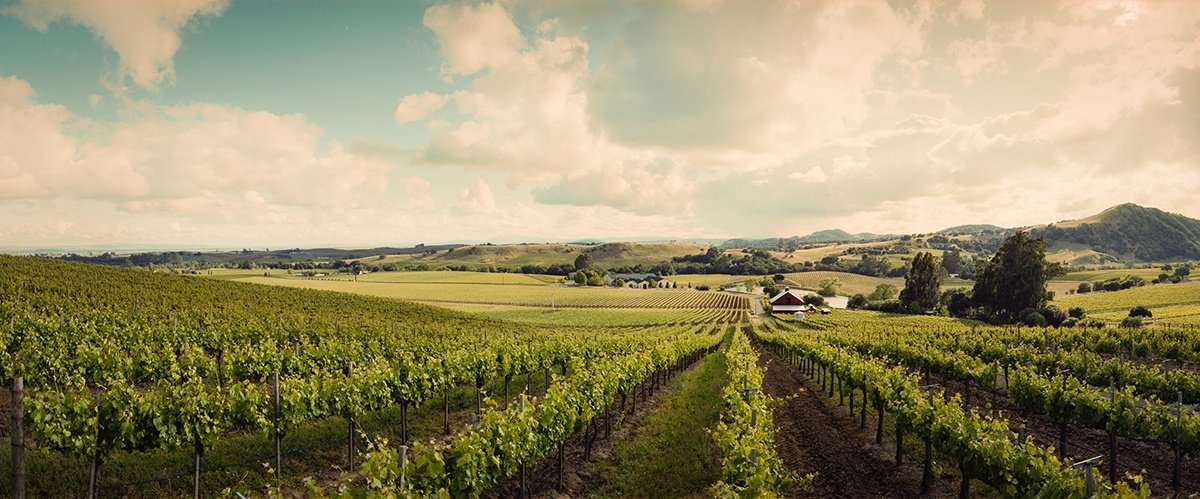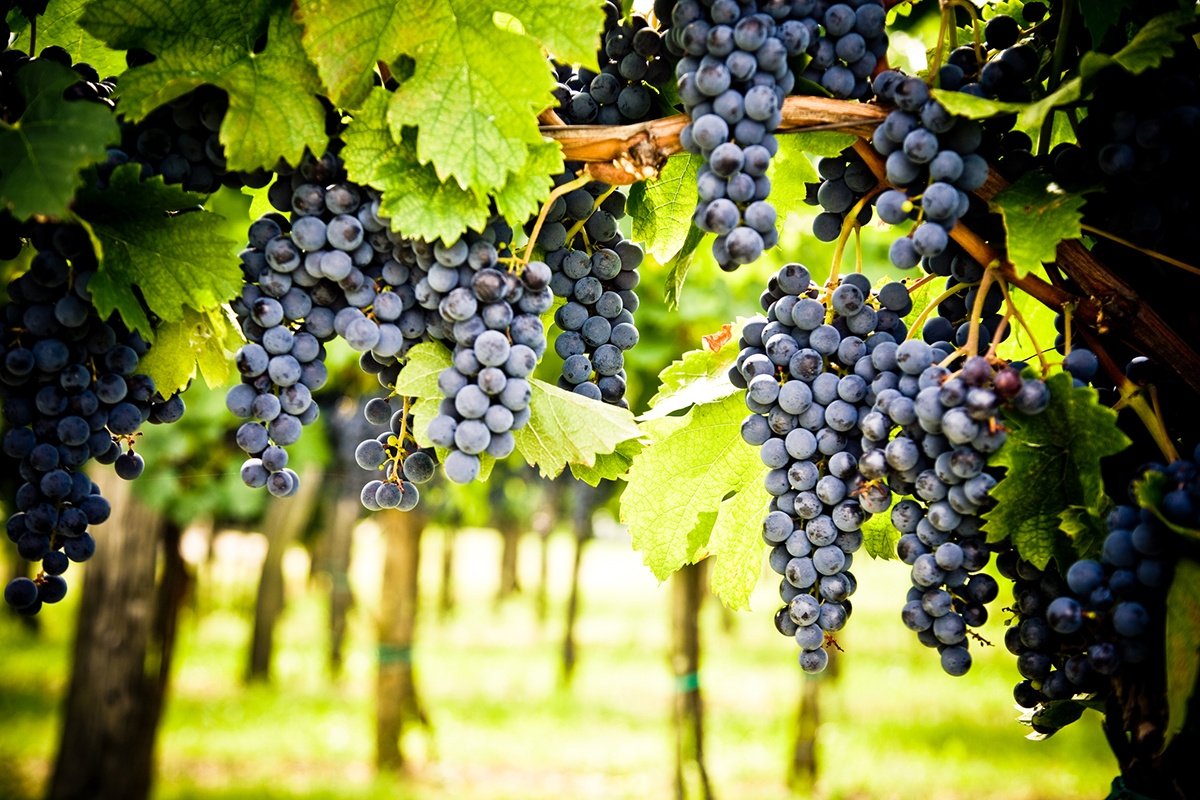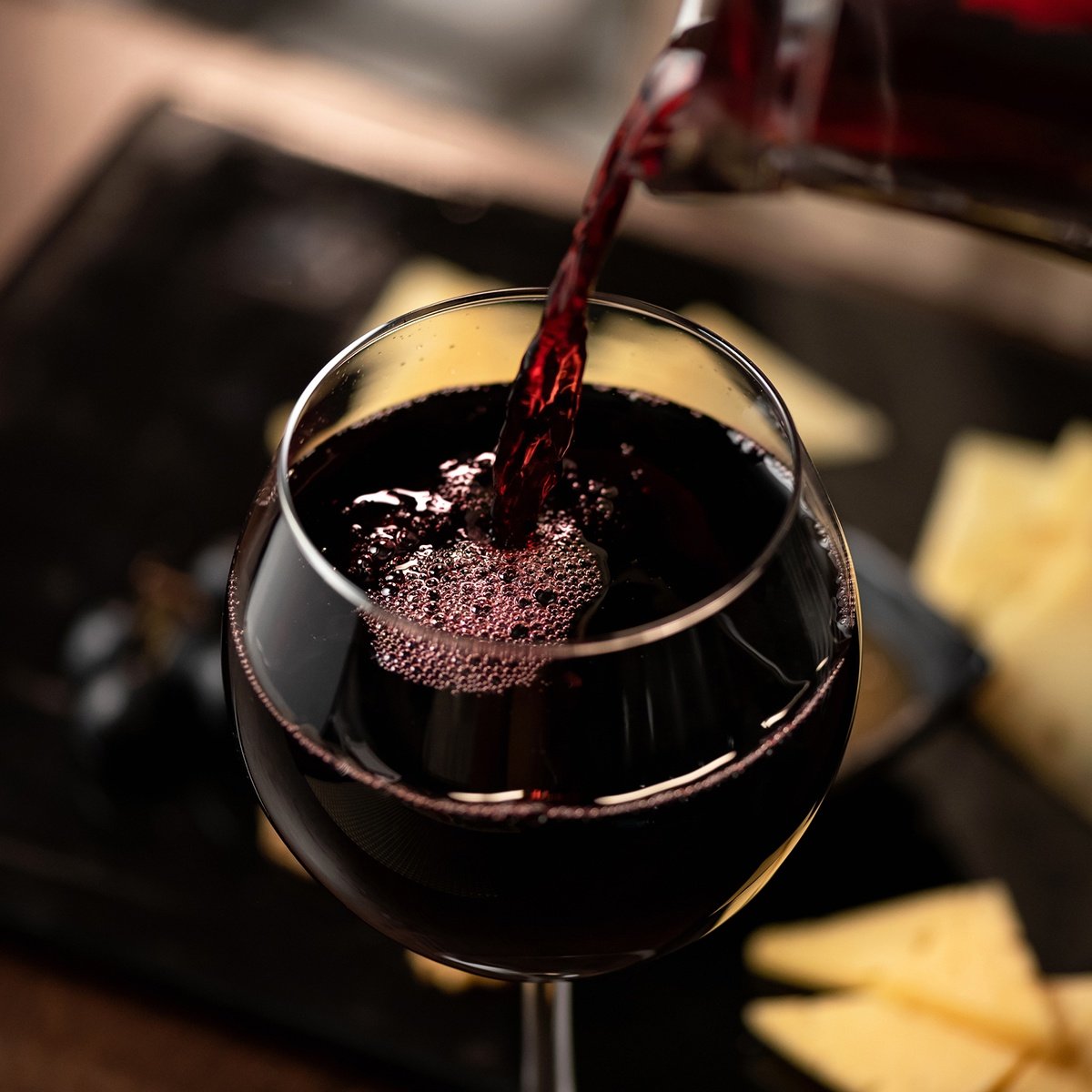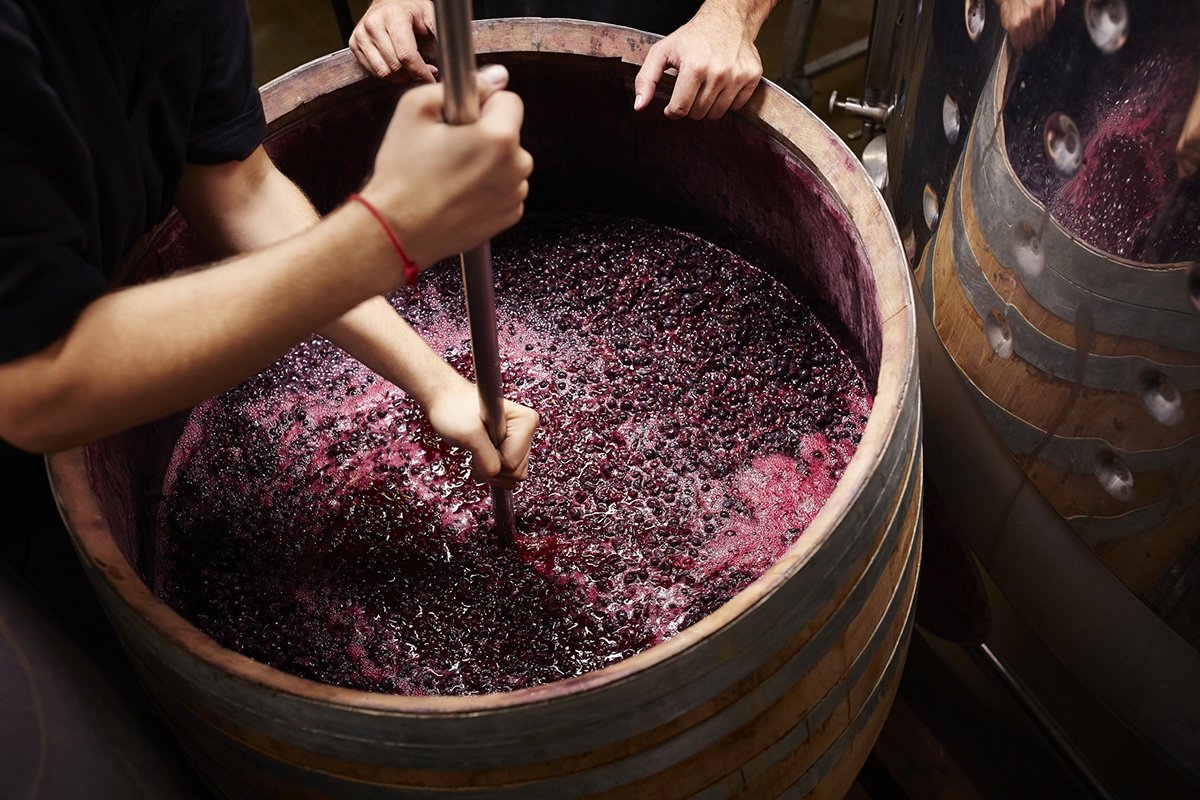When it’s time to choose a red wine to pair with dinner, don’t be surprised if it comes down to Merlot vs. Pinot Noir. Merlot is fruity with plush tannins that make it easy to love. Pinot Noir is elegant with bright red fruit, acidity, and tantalizing aromas.
Though Sideways debuted in 2004, the movie still influences how many people see these wines. Pinot Noir was depicted as the choice for wine connoisseurs, while Merlot was cast as boring and unsophisticated. The truth is, both of these French red wine grapes have their own merits and can make world-class wines when they’re handled with care.
Let’s explore the growing regions, flavors, and pairings for Merlot and Pinot Noir, so you’ll have a deeper understanding of these two red wines.

Growing regions
You’ll find both Pinot Noir and Merlot in vineyards worldwide, but these red wine grapes have different growing needs.
Merlot
Merlot is a versatile grape that thrives pretty much wherever it’s planted. The world’s best Merlots come from Bordeaux, France, Napa Valley, Sonoma County, Washington State, Northern Italy, Australia, and South America. Merlot ripens earlier than other Bordeaux grapes and is often blended with Cabernet Sauvignon to round out the flavors.

Pinot Noir
Pinot Noir grapes are delicate, thin-skinned, and high-maintenance. It prefers cooler climates with coastal breezes. Sunny days and chilly evenings allow it to ripen slowly and develop complex aromas and flavors.
The world’s finest Pinot Noirs come from the Burgundy region in France, and it also thrives in the Champagne and Alsace regions. Pinots from Oregon’s Willamette Valley, coastal California, Sonoma County, and New Zealand are also highly acclaimed.
Grape origins
Both Pinot Noir and Merlot are purple grapes in the wine grape family called vitis vinifera, but different DNA shaped their flavors.
Pinot Noir’s origins are a mystery, but it’s been cultivated in central France since the first century. It thrives in Burgundy, France, a relatively cool area with well-drained soils and just enough sun to ripen grapes. The name Pinot refers to the shape of the grape clusters, which resemble a pine cone.

Merlot’s grape parents are Cabernet Franc, an ancient Bordeaux variety, and Magdeleine Noire des Charentes, an obscure grape that’s all but lost to history. Merlot is the most widely grown red grape in Bordeaux and the second most planted red wine grape worldwide, behind Cabernet Sauvignon. The grape’s name comes from the western French word merlau, which means “little blackbirds.”
Winemaking process
Pinot Noir and Merlot are handled in similar ways during the winemaking process.
The ripe grapes are picked when there’s an ideal balance of sugars and acids. The grapes are sorted, destemmed, and crushed. Then the winemaker cold-soaks the skins and juice to add flavor, tannins, and color to the liquid. The winemaker adds yeast to start fermentation that converts the sugar in the juice to alcohol.

Here is where the winemaking process differs. After fermentation, the young wine is pressed off the skins and transferred to oak barrels for aging. Merlot ages in tall Bordeaux barrels, while Burgundy barrels used for Pinot Noir are shorter and more round. The barrels are toasted inside, so the wine picks up characteristics like smoke, vanilla, coffee, or chocolate, from the wood.
Flavors & food pairings
Both Merlot and Pinot Noir are food-loving red wines that make excellent pairings at the table. But depending on where they’re grown, Pinot Noir and Merlot take on different flavors and characteristics.
Merlot

Cool climate Merlots feature tangy fruits like red cherries, red plums, and chocolate, with higher acidity and soft tannins. In warm areas, Merlot is bigger with dark fruits like black cherries, plums, blackberries, more alcohol, and bolder tannins.
Merlot’s fruitiness, soft tannins, and moderate acidity make it delicious with everything from burgers, pizza, and tomato-based pasta, to red meat like beef short ribs, lamb, filet mignon, and vegetables like sweet potatoes or braised kale with smoky pork.
Pinot Noir

A classic Pinot Noir from a cooler region is complex, and sings with notes of raspberry, cranberry, red cherry, rose petal, smoky bacon, and cola. After aging on yeast, notes of mushrooms and forest floor can emerge. Pinot Noir is bolder and more straightforward in warmer areas with dark cherry, fig, black plum, and smokiness, plus higher alcohol, less acidity, and more prominent tannins.
Pinot Noir’s natural acidity makes it an ace at enhancing foods rather than overpowering them. You’ll love Pinot Noir with all kinds of pork and cured meats, lamb burgers, grilled salmon, mushrooms, beets, funky cheeses, and with coq au vin or beef bourguignon.
Are you interested in learning more about Pinot Noir and Merlot? Check out our Pinot Noir wine guide, Merlot wine guide, and article on how to pair Pinot Noir with your favorite foods.
